Using the best portrait photography backdrops will elevate your portraiture above anyone elses.
Portrait photography is all about the subject – the face/s in front of your camera.
There are a number of ways to ensure that you get the image you are trying to portray from make-up and colour coding through to lighting and equipment.
One aspect, which is often overlooked, is the background which can make or break an image.
You do not want distractions or conflicting interest to take away from your subject. Besides detracting from your subject it could cost you hours of extra work in post-processing to tidy it all up.
Solve this problem before you press the shutter with a high quality backdrop specifically for portraits.
Here are some thoughts on the best portrait photography backdrops available on the market today.
Also see my portrait photography tips and techniques post.
Contents
What to Consider When Deciding on a Backdrop
Decisions, decisions …
Intended Outcome?
Before you even start you need to know what your intended outcome is – do you want a dramatic portrait, a beauty portrait, a fun portrait, a textured background for effect or do you intend to replace the background and insert your own?
Portable or Fixed?
Backdrops are invariably used in studios or on location.
Where you shoot will determine what type of backdrop would best suit your requirements – for example if you are going to be taking it on location you probably want something light and easy to transport.
The material it is made from plays a big part in this.
Wide, Tall or Both?
The overall dimensions of your backdrop will depend on the size of the room you are working in.
It will also be determined by the type of portrait work you do – for example individual portraits can be done with a fairly narrow backdrop whereas large groups require something much wider.
Height will be determined by whether you want to do full body length portraits or just headshots.
Colours Determine the Mood.
Your backdrop colours determine the mood of your photos.
Dark backdrops create high contrast and drama where as lighter neutral tones are softer and more romantic.
Bright colours are dramatic but can overwhelm.
Choose your colours wisely – the best advice I can offer it so understand the colour spectrum and to know what colours go well together and what colours clash.
Match your model’s clothing to the backdrop to get the mood you are after.
Use the colour spectrum (pictured here) to guide you with colour coding.
Backdrop Material.
More on this in the next paragraph but always consider how you will store and hang your backdrop.
Ideally you want to be able to store it in a way that when it comes time to use it there are no creases or wrinkles on it.
Digital cameras pick up every little detail and you can save yourself a lot of time in post processing by having a crease or wrinkle free backdrop.
Iron or steam them out before the session if you have to. The 10 minutes it takes to do this is well worth the hours you’ll save later.
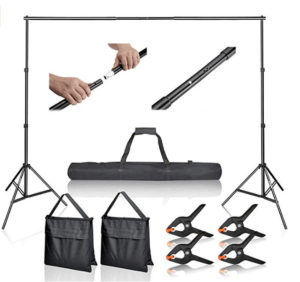
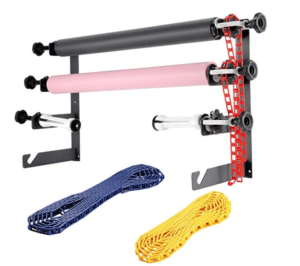
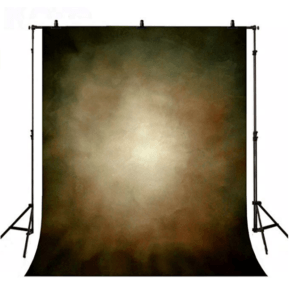
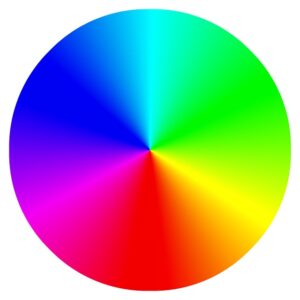
Different Materials Used in Backdrops
Backdrops are made of a range of materials and each has benefits and disadvantages which I discuss later.
They are made of:
- Fabric – Muslin and Canvas
- Paper
- Vinyl
Different materials are used for different applications – for example any backdrop that is green can be used as a “green screen” (more on this later).
Muslin, canvas and paper can all be used as seamless – you’ll learn the pros and cons of each and which suits your needs.
Fabric Backdrops - Pros and Cons
There are two popular types of natural fabric used for backdrops;
- Canvas and
- Muslin
The difference between the two is essentially density – muslin and lighter and therefore more transparent than canvas.
Both provide a beautiful professional, uncluttered background for portraits – in some cases a bit of care and pre-planning is needed though (see below).
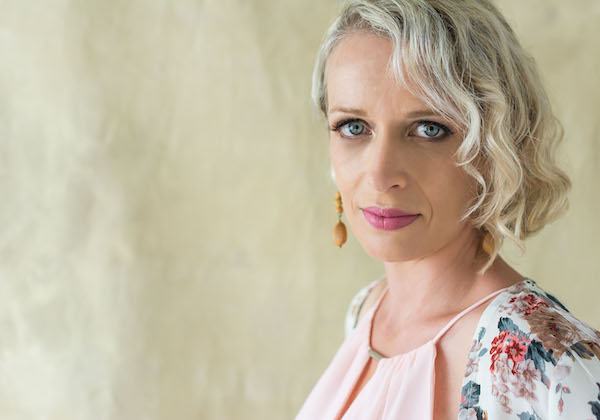
Canvas Backdrops
Pros
- This would be my #1 recommendation for those with a dedicated studio.
- Ideal for creating beauty portraits. You can create some amazingly stunning beauty portraits with the correct backdrop and colour coding either with perfect separation between the subject and the backdrop or with subtle colour tones that blend into each other.
- Hangs beautifully and won’t crease if kept hanging – I highly recommend using a permanent wall stand (see image above) if at all possible.
- Should not crease if stored in a roll. If it does crease when stored this way the creases should be minimal and are easily removed with a steamer.
- Canvas absorbs lights and in so doing eliminates hot spots. Light reflecting back to the camera from natural light or studio lights will impact negatively on your image and take time in post processing to remove.
Bouncing light off the canvas for backlighting produces a beautiful soft effect – this ideal for separation between the subject and the backdrop. - Is thick enough to prevent light shining through.
There is nothing worse than viewing a photo only to find that your camera has picked up detail that is behind the backdrop.
Save yourself this frustration and hours of post processing by using a canvas backdrop to eliminate this possibility. - Looks more professional than other backdrops.
- You can make your own unique hand-painted backdrops. It takes a bit of practice (and is fun) to get the desired look but is well worth the effort.
- Fantastic for adding textures in post-processing and creating unique and varied portraits from one single image.
- Unlimited and unique designs available – there are hundreds of different colours and designs to choose from in addition to the possibility of painting your own unique canvas backdrop.
Cons
- Is heavier than other materials and therefore not ideal for transporting around. Having said this I do take mine with me when I have an out of studio session. The end result is worth the trouble of ironing out any creases as I set-up for the session.
- Requires strong support. If you are using movable stands the last thing you want is for your backdrop to fall on your subject. Besides the possibilities of injuries it can be extremely embarrassing and have legal implications. Be safe and buy the heaviest stands you can afford.
- The weight of the canvas may cause the crossbar to bend resulting in visible creases in the canvas and creating an unprofessional and cheap look – always use an inflexible crossbar (trust me on this one) to save yourself time and embarrassment.
Muslin Backdrops
Pros
- Light and easy to hang – this is great if you don’t have an assistant and are working on your.
- Does not require a heavy duty stand for support. Once again this makes it easier to move both the stand ad the backdrop around.
- Perfect for transporting to external locations because they are so light and easy to set-up.
- Excellent for simple headshots such as those used on business cards or websites where you just want a bog-standard portrait.
- Easy to store. Can be stored hanging up – this is best to avoid creases, or rolled up, if you have limited space. If rolled up it will almost always need to be ironed before use.
Cons
- Thin material that will allow light to pass through from either side. To overcome this issue use a double layer or a second backdrop of a similar colour directly behind your main backdrop.
- Creases easily and will need to be ironed and pulled taut each time it is set up. This might be a pain but not as painful as a spoiled image or spending hours in post processing to fix it up.
- Limited design options. Being made of woven material muslin backdrops don’t come with much variety.
- Looks cheap in comparison to Canvas.
Paper Backdrops - Pros and Cons
Paper backdrops come in rolls in a variety of lengths (as long as 36 feet) and widths to suit all studio and off site situations.
Seamless and crease-free paper backdrops have been popular for professional and clean looking fashion and beauty shots for years.
Because full rolls are heavy a solid support system is recommended.
Pros
- Cost effective – rolls of seamless paper last a very long time and can be used over and over. If and when a section get’s creased, dirty or starts looking old simply cut it off and roll out a brand new section.
- Create smooth and attractive backgrounds with no clutter or distractions for headshots and portrait photography.
- Clean simple and vibrant. Consistent colour throughout with a range of vibrant or plain colours to choose from.
- Totally eliminates any need to work on background in post-processing. This could save you hours of work and frustration – spend your time on enhancing the portrait, not the background. Saving time by not having to fix mistakes is music to any photographers ears.
- Set-up in seconds. Tightly wound around a cardboard core the paper is very easy to unwind and set-up on your own (no assistant needed but one is always preferable).
- No ironing or steaming required. Roll it out and you’re good to go within seconds. Nothing could be easier.
- For studio or location shoots. Easy to transport subject only to the width you choose. I’ve transported wide rolls in my bog standard car without too much trouble.
- Create seamless backgrounds. Remove distracting breaks between the floor and the backdrop by extending the roll. Sweep it on to a smooth hard floor and tape it down. The model can now stand on it, or place your props on it, and take photos with no distinction between floor and background.
- Easily stored – taking up minimal space. Can be stored vertically or horizontally (recommended) to suit your requirements.
Cons
- Creasing. If the roll is bashed/dropped/banged or the central core is damaged, as sometimes happens during transportation, the entire length could be impacted. Handle with care and do not accept or buy a roll that has an obvious dent in it especially if the damage is through to the inner core.
- Unravelling. This is not a negative of the product – it is after all on a roll and designed to unravel. The problem is if it unravels too much. Use a clamp to secure and stop the paper unravelling beyond the point you want.
- Subject to humidity. The words “store in a cool dry place” come to mind. Made of paper they sensitive to moisture and it is best to store them in a dry environment away from any risk.
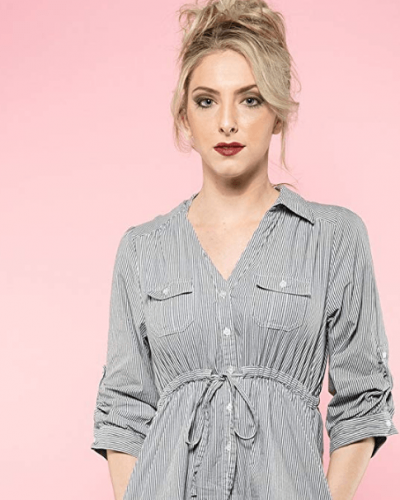
Vinyl Backdrops - Pros and Cons
Vinyl backdrops are a fun and easy way to create the background of your choice.
Made from strong long lasting vinyl with a pliable cotton back.
Although you can get a plain vinyl backdrop they are more commonly used as themes in birthdays, baby showers, parties and other celebrations.
Keep the backdrop taut for best results – vinyl backdrops are usually thin. It is advisable to secure the edges to your backdrop stand with clamps and tape the floor section down firmly.
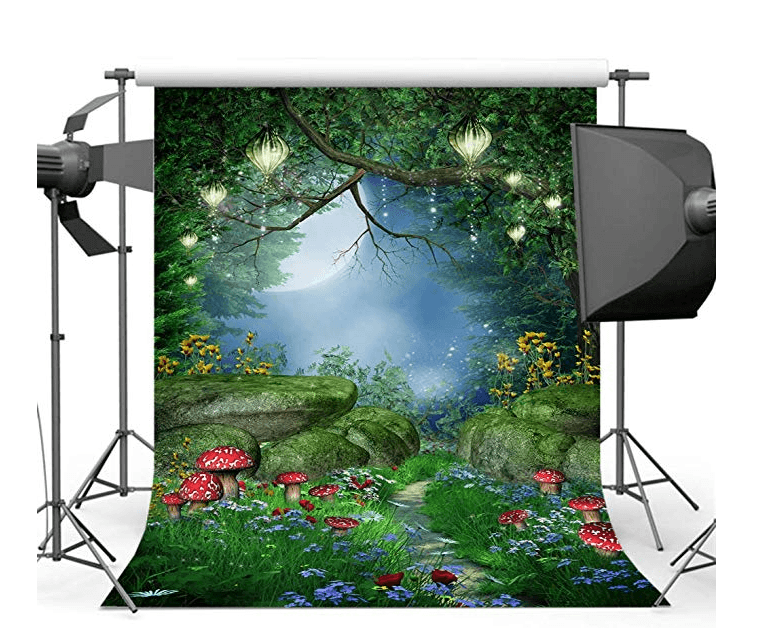
Pros
- Consistent and clean backgrounds for theme functions and fun portraits. Create the theme you want in any environment.
- Easily transportable. Very easy to move around and transport. You could even have a couple of different themes/backdrops at any one event.
- Easy to clean – simply wipe with a damp cloth.
- Creases can be ironed out. Small creases can be ironed from behind with a cool iron. Do not use a hot iron folks as your backdrop is vinyl.
- Use over and over for years to come.
- Lots of patterns and colours to choose from. Virtually any theme can be found. Popular ones are natural wood floors and walls, rustic brick walls, glitter backdrops, barn walls, floral backdrops – so many to choose from.
Cons
- Sizing – I’ve read a few reviews where people have been disappointed with the sizing. These seem to arise because folks haven’t paid attention to the description, asked questions or measure their own space correctly.
- Fading and or discolouring. A couple of negative reviews refer to fading and discolouring. This does happen with cheaper versions and it is best to store your backdrops undercover away from light.
- Heavy creases won’t come out. Any severe creasing will nor come out so handle with care. Using a too hot iron to iron these out will simply result in the vinyl stretching, warping or melting.
Collapsible Backdrops - Pros and Cons
Most commonly made from micro-fibre, a nylon blend or a cotton material collapsible backdrops are very transportable and easy to use in even the smallest of spaces.
They are double sided so you get two for the price of one! Plain and patterned options available.
Make that four for the price of one – I just remembered they can be used vertically or horizontally too.
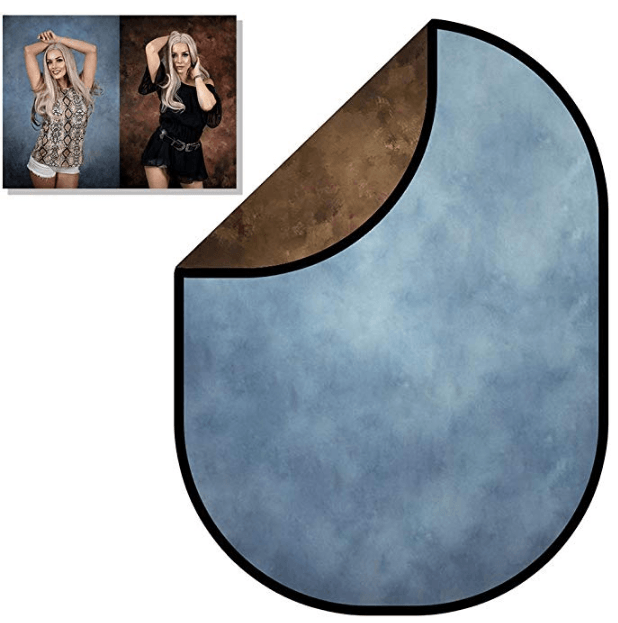
Pros
- Wrinkle and crease free – no ironing needed and zero extra post-processing saving you hours of endless work.
- Lightweight and easily transportable making them ideal in both studio and external use.
- One person operation. No assistant required.
- Non-reflective and non-glare eliminating any chance of hot spots.
- Inexpensive – great value for money for a long lasting, versatile and functional backdrop.
- Easy to clean. Simply wipe with a damp cloth.
- Long lasting. Your collapsible backdrop should last you for a long time due to the high quality material and its simple but effective storage.
- Compact storage. The backdrops fold up to a 1/3rd of the original size.
Cons
- Can be difficult to fold up the first time. Everyone struggles to fold these up the first time but once you have the hang of it it takes not time at all. As a bonus you will probably laugh at your initial efforts.
- Limited size. Best used for single portraits (vertically or horizontally) and double portraits (horizontally) due to the limited size of collapsible backdrops.
Green Screen Backdrops
I’ve included Green Screens in my post but have to confess that I have as yet not done much research on them.
They are used mostly in video presentations where the background (the green screen) is removed and replaced with any other background of the editor’s choice.
This is a great tool for video presenters, bloggers (or Vloggers as they are called) and product owners who use videos to promote their sales.
I will be getting one for my own YouTube channel and product reviews at some future date.
Specific software is required to remove and replace the background. There are a number of different software applications some are free and others vary in cost.
For more information on the required software applications click here.
Note: Although green is the generally accepted colour a blue screen backdrop can also be used.
A Final Word on Portrait Backdrops
I am sure you now have a better understanding of the importance of selecting the correct backdrop for the image you are trying to create.
A backdrop, or lack of one, can really make or break your photo.
With so many to choose from it is best to start your selection on the basis of your own situation and working environment.
From there get the best portrait backdrop and set-up for your needs.
Let me know what you think in the comments section below.
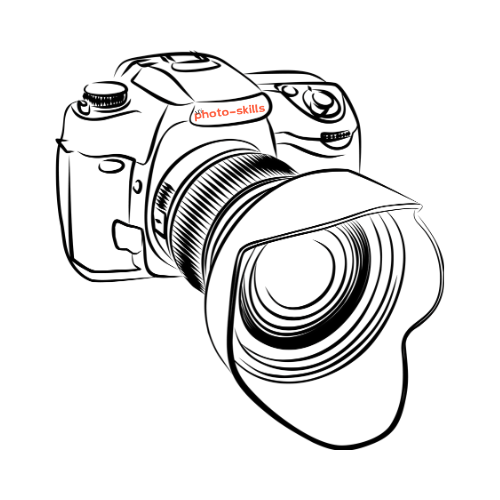
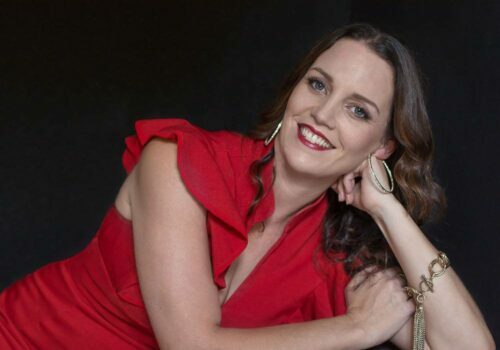

Hi Lawrence,
Delighted I came across your post there is a lot of valuable information here.
Can I ask should I obey the rule of the 3rd for portrait photography regarding the first image where the lady is to the right, there is a lot of canvas in view? I image this takes from the subject as the viewer is drawn to the open space.
Thanks again for this informative post.
All the best, Julie Anne
Hi Julie Anne – thanks for stopping in and …
what a great question!
And well spotted too.
The rule of thirds and any other so called “rule’ in photography is really just a guide lines. Once you know the reason for rules it is perfectly okay to “break’ them.
The photo you are referring to was intentionally taken like that as it is used on a website where I wanted to have space to write something on the header it was used for.
Compare that off-center photo to the second one where the lady on the pink background is in the centre of frame – I actually cropped it so she was slightly off centre, and tell me which you think has more visual impact.
At the end of the day it is all subjective and the artist can do what he wants I guess.
Thanks for commenting and asking such a great question.
Lawrence
PS under the Best Photography Books section ‘Gregory Heisler’s 30 Portraits’ has some truly amazing compositions which break all the rules.
I love the first photo where she is off centre!
I think it is particularly clever that you have used that yellow backdrop with her blonde hair.
Furthermore the texture of the background makes the portrai look very 3 dimensional and so much more interesting.
I am amazed that you painted that backdrop yourself. Do you sell them?
Bron
Hi Bron.
Thanks for the comment and the compliments.
Let me answer your last question first – I have never been asked if I would sell backdrops. I just make them for myself and doubt I would sell this particular one. Like all hand painted backdrops it is unique and impossible to replicate.
I love it and it was only the second one I ever made – the first one was a disaster.
Well spotted with the texture and the three dimensional look. This is precisely why I rate hand painted canvas backdrops over any other. To me they just add that extra dimension.
And yes the blonde hair on a similar coloured backdrop works really well – one of the things I learnt when I eventually got my head around the colour spectrum. Opposite and adjoining colours work best together.
Once again thanks for your comment.
Sincerely
Lawrence
Hi Lawrence!
First off I need to say, WOW! I didn’t know how important choosing the right background is for having the best pictures! I’m not a photographer myself but I have dabbled.
From reading your article, it seems that the paper background and the collapsible backgrounds would be best for beginners. They seem like the easier, fool proof backgrounds.
Once more experienced I’d be going for the canvas or vinyl background since it seems they are much more durable and even though they are heavy weight it would make for the best turnout for your pictures.
I really like the way you listed all the pros and cons, too. Even tips on how to fix some of the cons like ironing on cold to remove creases from the vinyl backdrop, for example. This makes it easier for people to choose which way they want to go and what they’re getting for their money.
I’m glad I stopped by your site. You seem to have a very great knowledge about photography and everything that goes along with it. I’ve learn a lot from this. Photography is awesome.
All the best
Melissa
Hi Melissa
Thanks for your comment and I am glad you enjoyed the information.
Very few people consider the background in photos, and they are so important in that they either help tp tell the story or they detract from the story.
That particular bulb went off in my head during a discussion about Leonardo Da Vinci’s famous Mona Lisa. The background he painted to the most famous portrait in the world tells us the location and something about the woman. There is a reason Leonardo painted a background.
Yes the collapsible and paper backdrops are the easiest and smoothest (meaning no ‘fixing’ in post processing) but the canvas backdrops add a little pizzaz without detracting from the subject.
When was the last time you treated yourself to a professional portrait session? You’ll be surprised at how much fun you will have. Do it!
Lawrence